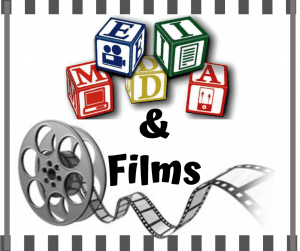Reading Time: 5 minutes
Noveena tells us about the basics of film appreciation. A Different Truths exclusive.
 Film is the art of moving images. In other words, it’s a language of motion picture. A series of audio-visual moving image that tells a story and viewers vouch it as a medium of entertainment. The origin of communication started with cave drawings, signs and symbols, pictography and paintings; and then language evolved. Human mind evolved its own signs and symbols, words and languages, according to their culture, geographical location and religious background.
Film is the art of moving images. In other words, it’s a language of motion picture. A series of audio-visual moving image that tells a story and viewers vouch it as a medium of entertainment. The origin of communication started with cave drawings, signs and symbols, pictography and paintings; and then language evolved. Human mind evolved its own signs and symbols, words and languages, according to their culture, geographical location and religious background.
Once St. Mathew, one of the twelve Christian Apostles said, “In the beginning was the Word. And the Word was with God, and the Word was God”.
Once St. Mathew, one of the twelve Christian Apostles said, “In the beginning was the Word. And the Word was with God, and the Word was God”. Otherwise, why should anyone look at a picture and call it a ‘text’ to be ‘read’, not seen? Here the appearance of cinema exists as a revolt against the authority of words. The advent of language and literature gave birth to print technology. In the print culture there is a limit to language ability to translate the exact imagination of sensory experience and visual narration as the way of photography, music and cinema do.
A film is beyond a stereotypical thought process where we go to a theatre with popcorns and leave the hall before the end credit lines. Our educational foundation has a method of teaching i.e., storytelling, through which one can learn and visualise the vast social-sciences, literatures and technologies. From the primitive ages to present, storytelling is a part of the culture. Our epics, mythology and history passed on to generations through oral tradition, and then following through different forms of written words, poetry, plays, novels, operas, songs, books, photo features and eventually the moving pictures or cinema. A film is very close to visual experience in various formats; it can be feature films, short films, documentaries etc.
Satyajit Ray described his basic meaning of film, in his initial piece of writings named, ‘Bishoye Chalachitra’.
One of the stalwarts of Indian cinema, Satyajit Ray, described his basic meaning of film, in his initial piece of writings named, ‘Bishoye Chalachitra’. There it is mentioned, “A film is picture, a film is word, a film is movement, a film is criticism, a film is drama, a film is music, a film is story, and a film is a thousand expressive audio or visual details.” In addition, with the advancement of technology one cannot avoid colours (black and white or multi-colour), sound and graphics.
The basic definition of a film can be derived as moving images screened on a projector, which can be seen in with a community feeling in theater or multiplexes. Now, with the boom of technology, audiences can feel the individual experience through OTT platforms (Over the Top). In a broad perspective, the general perception is that a film is a tale, which consists of an antagonist and a protagonist. A visual performance of a larger than life heroic male character with vicious persona of a villain and serene beauty of a heroine is labeled as a film. Is that enough about films? Cinema is not limited to one culture, language or genre. There are no boundaries for storytelling and visual languages. So, cinema and characters shouldn’t be limited to known ‘Star’ system; it’s beyond these specifics.
In the process of understanding film appreciation, one must go through few elementary questions i.e., what is the film about? Which aspect of the film must be seen? What is the narrative of the film? What is the pattern of storytelling?
In the process of understanding film appreciation, one must go through few elementary questions i.e., what is the film about? Which aspect of the film must be seen? What is the narrative of the film? What is the pattern of storytelling? Before answering these questions, one has to comprehend the basic elements of cinema; a cinema is a story in which a few characters perform their parts in a certain time and space.
In cinema, to recognise the narrative of the storyline, the audience has to identify the plot, characters, point of view, theme, structure, situation and conflict of the film. To make it more precise, let’s take some examples to clarify the above points.
In Guru Dutt’s ‘Kagaz ke phool’, the plot of the film is the voyage of a film director, his failed marriage, passion for directing movies on his own terms.
In Guru Dutt’s ‘Kagaz ke phool’, the plot of the film is the voyage of a film director, his failed marriage, passion for directing movies on his own terms. The conflict scenario involved his daughter’s custody and his love interest. The climax is a plethora of tragedies: separation from his lady love, from his daughter and at same time loss of stature as a director. In another film, Ritwik Ghatak’s ‘Meghe Dhaka Tara’, a multilayered character ‘Nita’ was ruthlessly exploited by her mother, younger sister and brother. Director Ghatak, portrayed an iron-willed lady though with a strong urge for living, struck with the ferocity of a terminal illness.
The film Schindler’s List, the theme is based on a real character and situation. Steven Spielberg showed it on a black and white canvas. A German industrialist Oskar Schindler is a member of the Nazi party who tries to save the lives of more than nine hundred Jews in the holocaust. Here we can realise the point of view of the director and his protagonist.
The suffusing warmth of the father-and-son relationship makes Bicycle Thieves a great work of cinema.
Vittorio de Sica’s neo-realistic movie, Bicycle Thieves (Lardi di Bicclette), is based on post-war Italy. A working-class man, Ricci’s bicycle is stolen. The situational conflict compelled Ricci to be a bicycle thief to retain his job. He was caught and beaten by the crowd in front of his son. Combination of these social and moral compass and real locations built a phenomenal art piece. The suffusing warmth of the father-and-son relationship makes Bicycle Thieves a great work of cinema.
These above-mentioned films are just basic ideas to understand the plot, situation, structure and a way of storytelling in different time and space. Films are limited to a language or region. In the book, ‘How to read a film’ an American film critic, James Monaco mentioned, “The great thing about the literature is that you can imagine, the great thing about film is that you can’t”. A film is a physical reality; audiences experience it on screen. Cinema is the art of making movies using celluloid/digital memory called film. That includes many elements in macro (genre & narrative) and micro (cinematography, sound, mise-en-scene and light) aspect of film language. Appreciating a film is to understand the fundamentals of film aesthetics in terms of the plot, sound, camera, light and the treatment to tell a story.
Photos from the Internet















Awesome!!!